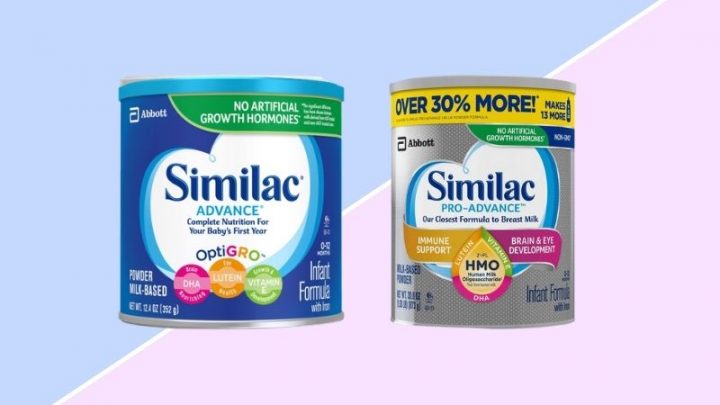Similac is one of the most popular brands of baby formula, and for good reason. But when comparing Similac Advance VS Pro Advance, which formula is better?
The Similac Advance VS Pro Advance debate requires several factors to be taken into consideration: the ingredients, the price, the overall benefits, and the potential side-effects.
“But why even bother with this? Can’t I just breastfeed my child?”
You most certainly can! However, some moms choose not to or are unable to provide breast milk for their child, which means breastfeeding may not be an option.
Whether there are issues with breast milk supply, their baby has infantile lactose intolerance, or they simply choose to bottle feed their child, infant formula is the next best option for some people.
It’s the most solid replacement for breast milk available, and it contains all of the healthy nutrients you can find in human milk.
But out of these two Similac formulas, there has to be one superior choice, right?
Read on to find out which comes out on top.
Similac Advance VS Pro Advance: The Rundown
1. Similac Advance Infant Formula
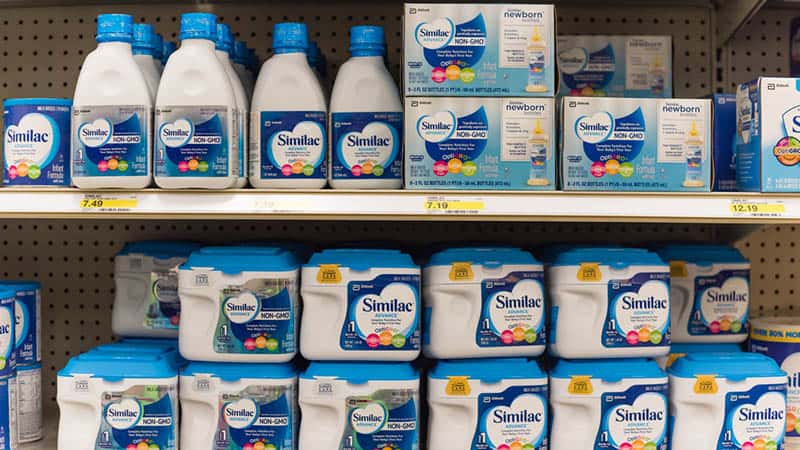
The Advance Infant Formula is one of Similac’s best products and one of the best on the market overall.
The special thing about it is Similac’s unique and exclusive blend, called OptiGRO.
It contains three very potent nutrients: Vitamin E, Lutein, and DHA, which are key factors in healthy eye development and cognitive function development.
This specific blend has iron in it too, promoting better cardiovascular and bone health on top of everything else.
The Similac Advance infant formula is also the one most similar to that of regular breast milk and isn’t genetically modified with any artificial growth hormones either.
That said, while Similac itself is non-GMO, the GMO variants don’t have any negative effects tied to them and are often cheaper, although they do cut some corners on other things, which means they might not be as high quality as Similac products.
The other important nutrients in this product are riboflavin and vitamins D and B6.
You’ll also find that it contains prebiotics, which help build a good foundation for the development of healthy gut flora (gut bacteria) to help strengthen your child’s immune system and digestive system early.
The formula has a ready-to-feed variant available too, so you can skip the mixing step entirely if you’re someone with a busy schedule and are often short for time.
It’s also the world’s #1 most trusted baby formula, according to a vote made by moms all across the globe, so there has to be something to it.
The regular pack is 23.02 oz, split into separate servings of 5.3 fl oz.
However, while those positives are all well and good, nothing is perfect and neither is this baby formula.
Thankfully, the imperfections are mostly on the financial side, as the Similac brand, and Similac Advance in particular, tend to be quite pricey.
This might not be the best fit for parents on a budget, which might dock a few points off its total score.
The other negative is the fact that it does carry some mild side effects.
Nothing too scary: just some gassiness and bloating, which leads to a fussier and crankier baby more often than not, but outside of that it’s one of the best formulas available on Amazon and the market in general.
Pros:
• Made with non-GMO ingredients
• Unique OptiGRO blend of essential vitamins and nutrients
• Contains prebiotics to help aid the growth of intestinal flora
• Ready to feed option available for busy parents
Cons:
• Known to cause gas and colic which leads to fussiness in babies
• On the expensive side
2. Similac Pro-Advance Non-GMO Infant Formula
- No.1 BRAND FOR IMMUNE SUPPORT: Similac Pro-Advance is the first infant formula with 2’ FL HMO designed to be closer than ever to breast milk. (Based on pediatrician recommendations & IQVIA ProVoice survey 12 months ending February 2020; not from human milk)
- NO ARTIFICIAL GROWTH HORMONES: Similac is the first leading infant formula brand with no artificial growth hormones (No significant difference has been shown between milk derived from rbST-treated and non-rbST-treated cows)
Prices pulled from the Amazon Product Advertising API on:
Product prices and availability are accurate as of the date/time indicated and are subject to change. Any price and availability information displayed on [relevant Amazon Site(s), as applicable] at the time of purchase will apply to the purchase of this product.
The other contender in the Similac Advance VS Pro Advance battle is the Similac Pro Advance baby formula made by Abbott laboratories.
Much like the regular Advance, it contains healthy amounts of iron to help oxygen bind to blood and aid the development and strengthening of bone tissue.
It’s also worth noting that, much like the regular Similac formula, it contains the complete nutrition package a child needs to develop into a healthy toddler during his first year of life, meaning you’ll find the standard lutein, vitamin E, and DHA in the blend here as well.
The difference between the standard Advance formula and the Pro-Advance is the addition of FL HMO (FL Human Milk Oligosaccharides).
They provide an additional boost to the baby’s immune system and are found naturally in breast milk.
The container comes in at 36 oz, though it has the same recommended serving size of 5.3 fl oz.
The Similac Pro-Advance doesn’t contain GMOs or palm olein oil, making it a fully natural product through and through.
It has the closest similarities to regular mother’s milk.
On top of all the aforementioned ingredients, the formula servings contain the standard required amounts of carbohydrates and natural fats, and are chock full of calcium and protein, giving your kiddo everything he needs to grow up big and strong.
Plus, you won’t have to deal with the potential problems that can arise with exclusively breastfeeding, like breast engorgement or an imbalance of foremilk and hindmilk.
However, while side effects are minimal with the Pro-advance, they still do exist for children with sensitive tummies.
These usually boil down to the odd spit up scenario, a gassy baby, or some constipation in the worst cases.
Pros:
• GMO and palm olein oil free
• Contains iron and calcium for better bone and blood health
• Contains the OPTIGRO blend, which has all the necessary nutrients you find in mother’s milk
• Contains FL HMOs, which aid in the optimal growth of healthy gut bacteria and intestinal flora
• Ready to feed variant available for busy parents
Cons:
• On the expensive side
• Can cause some minor side effects like constipation and gas, which might lead to fussiness in children with sensitive stomachs
The Main Ingredients Of Similac Products
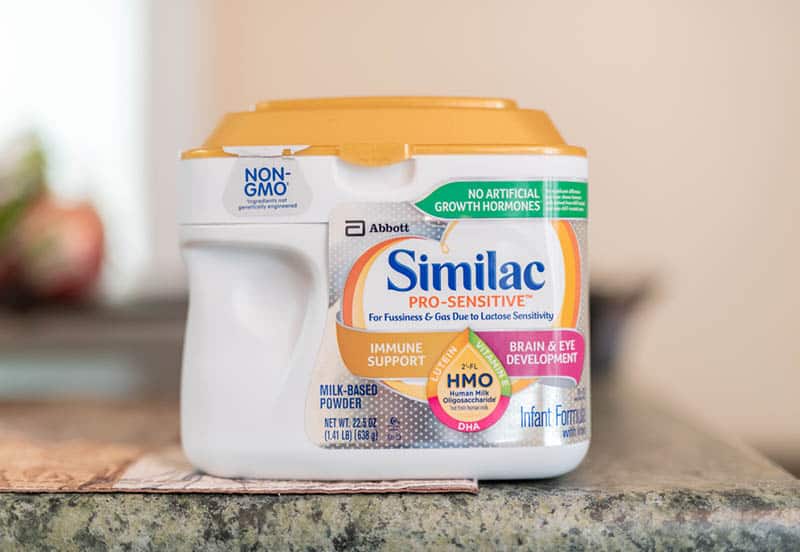
The reason why the Similac baby formula brand is one of the best in the business compared to some of the other popular formula brands, like Enfamil Gentlease or similar, is because of the ingredients they use, namely the OptiGRO blend.
It contains three very special ingredients which provide your child with the necessary nutrition to facilitate the development of a healthy body and mind.
The names of these ingredients alone don’t usually tell parents what their benefits are, so I’ve decided to dedicate a little bit of this article to better informing you guys about what each of them does and why they’re so crucial in child nutrition.
DHA
We all know what Omega-3 oils and fatty acids are.
Well this one is one that’s naturally found within humans.
It’s a vital nutrient that helps promote healthy eye growth and proper brain development, and is the hidden secret, alongside vitamin E, for ensuring good eyesight in the future.
However, the main benefit of DHA in the first year of a child’s life is that it helps properly develop the nervous system.
For example, kids who’ve had a higher amount of DHA in their diet during early childhood have been shown to be more literate than those who had lower amounts.
Vitamin E
Vitamin E is a key component in the development of good eyesight, and an important antioxidant that helps keep a healthier skin tone and is an important binding agent for newer cells.
Lutein
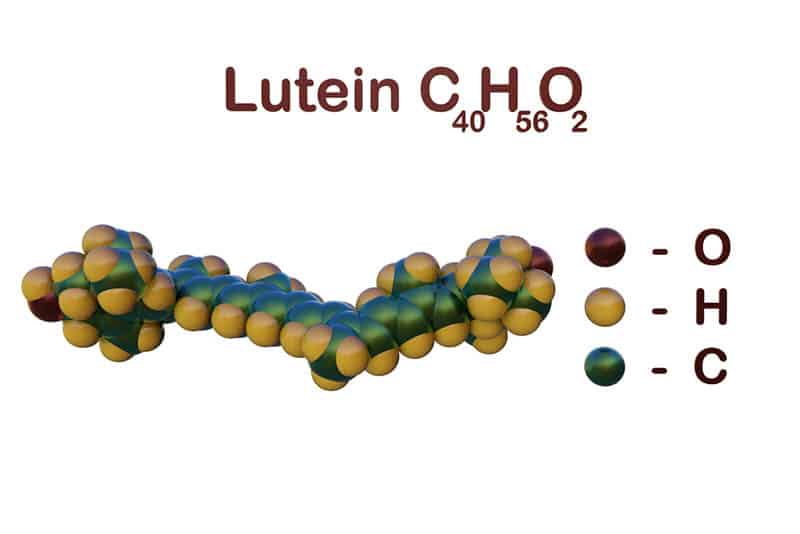
Lutein is a carotenoid found in the retina of the human eye, and is also in plants.
Oddly enough, most of the major nutrients revolve around the eyes.
Lutein allows the eye to absorb blue light. A lack of this nutrient has been associated with colorblindness.
It also acts as a defensive layer for DHA, protecting it from free radicals found within the body.
Lutein also has other purposes, like improving many aspects of cognition and cognitive memory in general, making it a very important nutrient in a healthy child’s diet.
It also has good use as an antioxidant, helping protect against the degradation of the bodies’ cells.
FL HMOs
While FL HMOs aren’t found in the OptiGRO formula, it’s a very important part of Similac’s great success as a product.
HMOs, also known as human milk oligosaccharides, are the third-largest solid component of breast milk and benefit a variety of core systems in a child’s body.
It helps promote the development of everything from cognitive skills, faster immune responses, and stronger intestinal flora.
These nucleotides are extremely important in developing a healthy immune system in children, which is why their inclusion in Similac products was such a great success.
Even their Alimentum, Similac Sensitive, and Pro-Sensitive lines have them, and there’s a clear and significant difference in immune support between formula brands that have them and those that don’t.
Similac Advance VS PRO Advance: The Comparison
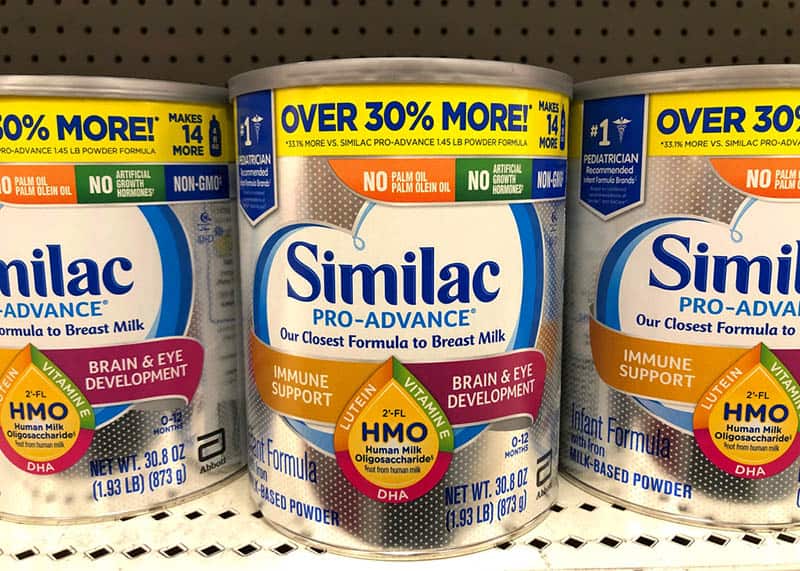
Now that we have all the information we need, it’s time to compare them and see what the differences between Similac Advance and Pro-advance are.
Then we can find out who comes out on top!
They’re very similar, so this is going to be an extremely tough call.
The price: a tie
Both products are equally as expensive and the price difference is close enough for it to be considered a non-factor most of the time.
The regular Advance formula is a tiny bit cheaper, but not by much.
Nutrients: the Pro-Advance wins
While both products include an equal amount of nutrients in their own right, the Pro-advance includes 2 FL HMOs, making it the winner of this round of the Similac Advance VS Pro Advance bout.
Overall quality: a tie
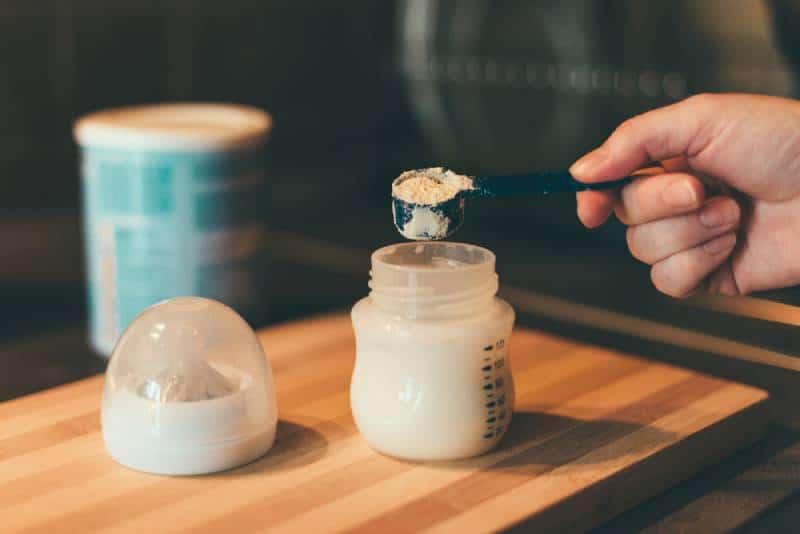
Both products are non-GMO and don’t contain palm olein oil, not to mention that their nutrients are extracted from non-rBST treated (recombinant bovine somatotropin) cows, (even though it doesn’t impose a higher health risk if they were) so they’re mostly the same in this regard too.
The taste: Similac Pro-Advance wins
While all Similac products have the outstanding benefit of being so similar when it comes to both the taste, consistency, and nutrient count of breast milk, there are some that perform this task better than others, at least in the taste and consistency department.
This time, the award goes to Similac Pro-Advance, whose use of the 2 FL HMOs makes it closer to the taste of real breast milk.
The winner: Similac Pro-Advance
As you can tell, it was really tough to decide on a winner because the two formulas are similar in so many ways.
I was even close to using packaging as a tie-breaker, but the taste managed to tip the scales in the favor of Pro-Advance.
The fact that the Pro-Advance can so accurately replicate the taste and texture of mother’s milk is a tremendous help for mothers everywhere.
Normally, it’s really difficult to transition from breast milk to formula, but this makes it so much easier.
However, if you don’t really have any problems with transitioning, you can use the regular Advance infant formula just as well as the Pro-advance one, and it’ll even manage to save you a couple of bucks.
In the end, it mostly comes down to personal preference, and the real difference is merely in the packaging, the rest is pretty much the same.
In Conclusion

In the debate between Similac Advance VS Pro Advance, many factors had to be taken into consideration.
Everything from the prep time to the availability of a ready-to-feed option and overall value.
Ultimately, many of them ended up being the same.
Similac Pro-Advance is really just Advance 2.0 with a few refinements here and there and some ingredient shifts, but overall they serve the exact same purpose in a shiny new package.
That said, because neither formula is brand new to the market any longer, they’re both equal in price as the novelty of the Pro has worn off.
They’re still the best baby formulas out there though, don’t get me wrong, and they’re often sold out on the Amazon marketplace due to their popularity. After all, that #1 tag isn’t just for show.
My closing thought is that if you’re looking for the best quality baby formula for your little one, then go with either of these two.
As long as it’s Similac, no matter which version, you can be sure that you’ve chosen the right option.
Do keep in mind that just because they’re the best brand out there, it doesn’t mean that your child will think so too.
They might prefer a different brand, and that’s okay.
Also, make sure to talk to your child’s pediatrician or your family doctor before swapping to a new formula, especially if your baby is having any digestive issues.
They need to okay any dietary changes that you make for your child because they’re the most well-informed and qualified individuals out there as far as your kiddo’s health is concerned.
Make sure to always prioritize their opinion over any others you might hear on the internet, as not everything you read online is true and most articles are merely guidelines, not gospel.
Take some time to process all the input you get before coming to a decision.
I’m sure you’ll make the right one, mamma.
Until next time!
References:
• Office of Dietary Supplements, (2018, November 21.), “Omega-3 Fatty Acids”, National Institutes of Health website.
• Abbott, (N.D.), “A Breakthrough in Infant Formula”: 2′-FL HMO, Abbot website.
Like this post? Please share or pin it for later. You can also stay in the loop and follow us on Facebook, Instagram or Pinterest.
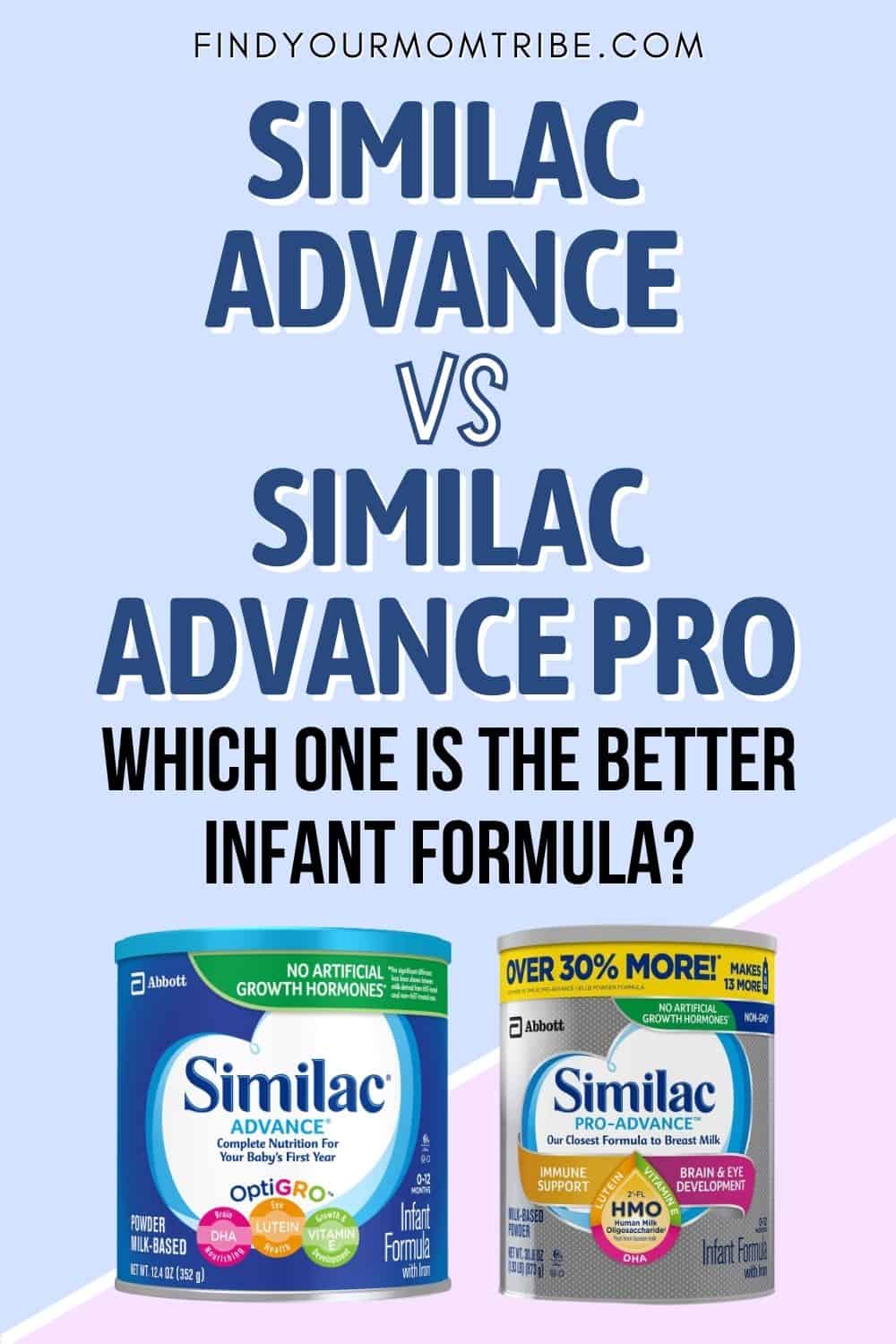
We love honesty! Find Your Mom Tribe is an Amazon Associate and we earn from qualifying purchases through affiliate links at no extra cost to you. Please see our full Amazon Affiliate disclosure for more information.

